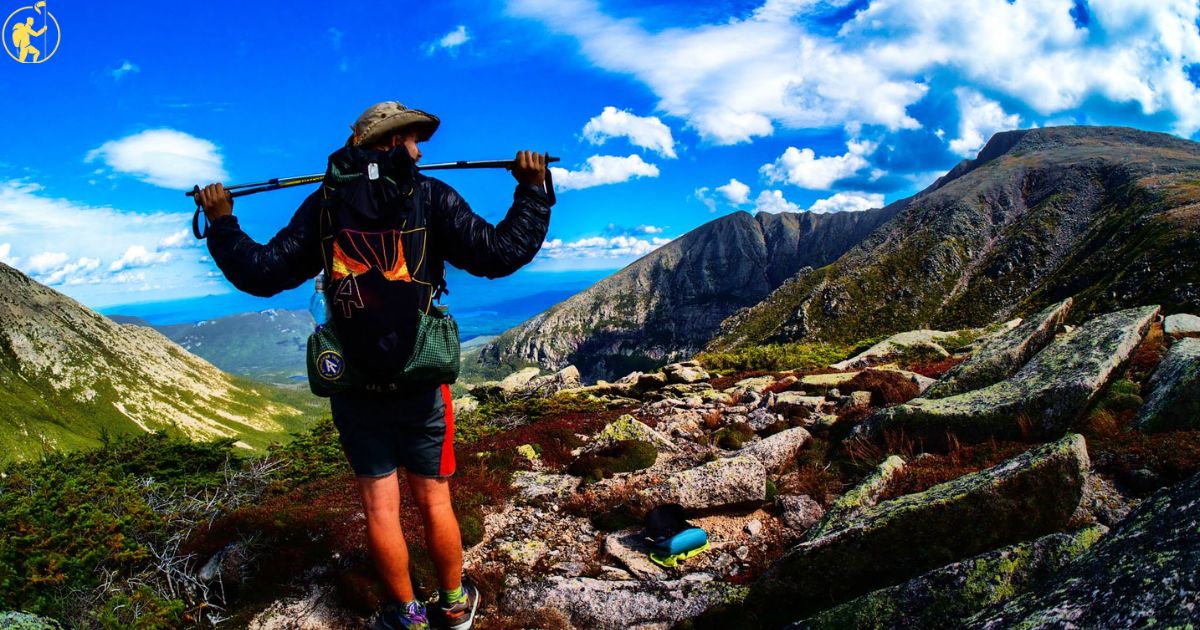Thru-hiking, a challenging outdoor pursuit gaining popularity in the United States, involves trekking an entire trail from start to finish, often spanning thousands of miles. This unique adventure is more than just a physical journey; it’s an immersive experience that requires resilience, preparation, and a deep connection with nature.
Picture yourself on a thru-hiking adventure, where every step unfolds a story, and each trail marker signifies a triumph. Thru-hiking, also known as through-hiking, takes you through diverse terrains, from sun-drenched deserts to the towering peaks of the Rockies. It’s a profound exploration, a personal odyssey where hikers push their limits, overcome obstacles, and embrace the simplicity of a backpack, a trail, and unwavering determination to conquer each mile.
For those captivated by the allure of the great outdoors, thru-hiking provides an opportunity to disconnect from the daily grind, exchanging cityscapes for scenic landscapes. Iconic trails like the Appalachian Trail, Pacific Crest Trail, and Continental Divide Trail offer ambitious thru-hikers a transformative journey, testing their endurance and providing a profound sense of accomplishment. As the thru-hiking community continues to expand, so does the shared spirit of adventure, making it a captivating pursuit for nature enthusiasts throughout the USA.
What Is Thru-Hiking?
Thru-hiking is a fantastic outdoor adventure that involves walking long-distance trails from start to finish. It’s all about covering extensive distances, often thousands of miles, using your own two feet. To excel at thru-hiking, you need determination, resilience, and a true love for nature.
Successful thru-hiking requires careful planning, taking into account factors such as weather, terrain, and necessary supplies. Hikers need to carry essential gear, such as lightweight tents, sleeping bags, and compact cooking equipment. Notable thru-hiking routes include the famous Appalachian Trail and Pacific Crest Trail. Thru-hikers embark on a transformative journey, immersing themselves in the beauty of various landscapes while testing their limits. Beyond being a physical challenge, thru-hiking is a profound exploration of oneself and the incredible outdoors.
Variations of Classic Thru-Hikes
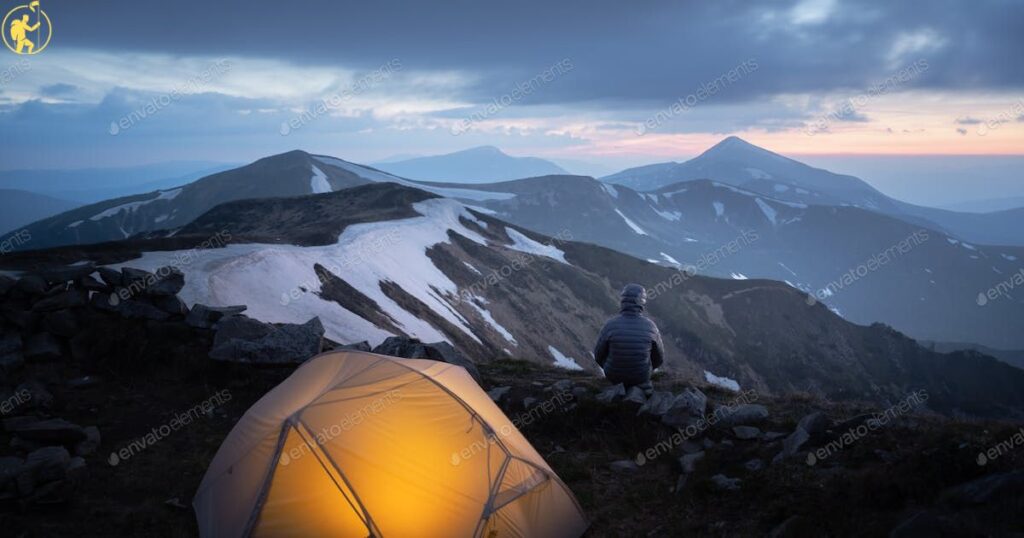
Apart from the familiar thru-hiking routes, there are intriguing alternatives worth considering. Section hiking, a popular choice, involves completing a trail in smaller segments over time, accommodating those with busy schedules.
Another option is the flip-flop thru-hike, where hikers start in the middle of the trail and then move to the beginning or end. This strategic approach helps overcome weather challenges and provides a unique perspective. Urban thru-hiking, on the other hand, blends city exploration into the journey for a distinctive experience. Whether opting for a less-known trail or embracing a creative strategy, these alternatives cater to diverse preferences in the world of thru-hiking.
Thru-Hike Challenges
A Concise Guide
1. Logistics and Planning:
- Resupply points, food, water, and transportation planning.
- Quick adjustments for unexpected events.
2. Weather Conditions:
- Adapting to diverse weather conditions.
- Ensuring proper gear for different weather scenarios.
3. Gear Management:
- Balancing safety and comfort with equipment.
- Handling gear failures and improvisation.
4. Navigational Challenges:
- Navigating trails, especially in remote areas.
- Using maps, compasses, and GPS effectively.
5. Wildlife Encounters:
- Coexisting with wildlife.
- Taking necessary precautions with bears, snakes, and insects.
6. Health and Hygiene:
- Maintaining personal hygiene.
- Addressing potential health risks promptly.
7. Social Challenges:
- Managing solitude and potential loneliness.
- Navigating interpersonal dynamics with fellow hikers.
8. Resilience to Setbacks:
- Adapting to unexpected setbacks, like injuries or trail closures.
This condensed guide highlights the primary challenges of thru-hiking, providing a quick overview of the essential aspects.
Mental Challenges

Dealing with mental challenges is a common aspect of the human experience. Daily stressors often lead to emotional struggles, manifesting as anxiety, depression, or other mental health issues. Essential coping mechanisms involve seeking support and practicing self-care. Identifying and addressing mental challenges actively contributes to overall well-being.
Successfully overcoming mental challenges requires resilience and self-awareness. What To Wear Hiking? Developing effective coping strategies enhances mental strength and resilience. Prioritizing mental health through self-reflection and seeking professional assistance when needed is crucial. While everyone encounters mental challenges, taking proactive measures can cultivate a healthier mindset for a more fulfilling life.
Physical Challenges
Physical challenges are an inherent part of life, impacting individuals globally. From daily inconveniences to significant health issues, adaptability and perseverance are key in addressing them. Seeking medical guidance and adopting a proactive approach are essential for enhancing physical well-being.
Building Resilience Against Physical Challenges:
Dealing with physical challenges requires a resilient mindset. Regular exercise and a healthy lifestyle can bolster physical capabilities and resilience. Seeking medical advice and adhering to prescribed treatments are crucial for managing physical hurdles. Maintaining a positive attitude and fostering a supportive environment contribute significantly to overcoming physical challenges effectively.
Financial Challenges

Financial challenges can emerge unexpectedly, creating stress and uncertainty for individuals. Sudden job loss or unforeseen expenses can disrupt financial stability, making it challenging to meet daily needs. Managing debt in such circumstances becomes daunting, adding to the overall financial burden.
In these situations, creating a realistic budget is crucial for tackling financial challenges. Identifying unnecessary expenses and prioritizing essential needs can help regain control over finances. Seeking professional advice or exploring financial assistance programs can provide valuable support in navigating and overcoming these challenges.
The Planning Process
The planning process involves a systematic approach to attaining defined goals. Initially, clear objectives are set, outlining what needs to be achieved. Subsequently, a comprehensive analysis of resources and potential obstacles is undertaken to devise effective strategies. Once the strategy is formulated, detailed plans are created, breaking down tasks and assigning responsibilities.
Continuous monitoring and evaluation are essential components of the planning process. Regular assessments ensure that plans remain on course and can be adjusted if circumstances shift. Flexibility and adaptability are crucial to successful planning, enabling agility in response to unforeseen challenges or opportunities.
Itinerary

- An itinerary serves as a detailed plan for a journey or trip.
- It encompasses information about destinations, activities, and schedules.
- It aids travelers in staying organized and optimizing their time.
- Airlines and travel agencies often provide electronic itineraries for convenience.
- Components may include flight details, hotel reservations, and planned excursions.
- Crafting an itinerary can elevate the overall travel experience.
- It acts as a guide, ensuring travelers don’t miss important events or attractions.
- Some mobile apps assist in creating and managing digital itineraries.
- Well-crafted itineraries balance exploration and relaxation for a comprehensive trip.
- A clear itinerary reduces stress and enhances travel enjoyment.
Food and Water
Food and water are fundamental for our well-being and daily function. Nutrient-rich meals serve as the fuel for our bodies, providing energy and supporting overall health. It’s crucial to uphold a balanced diet that incorporates a variety of foods for optimal nutrition.
Likewise, maintaining hydration with sufficient water intake is vital. Water plays a crucial role in various bodily functions, including digestion and temperature regulation. Being mindful of our food choices and ensuring regular water consumption significantly contribute to our overall health and vitality.
The Thru-Hiking Community
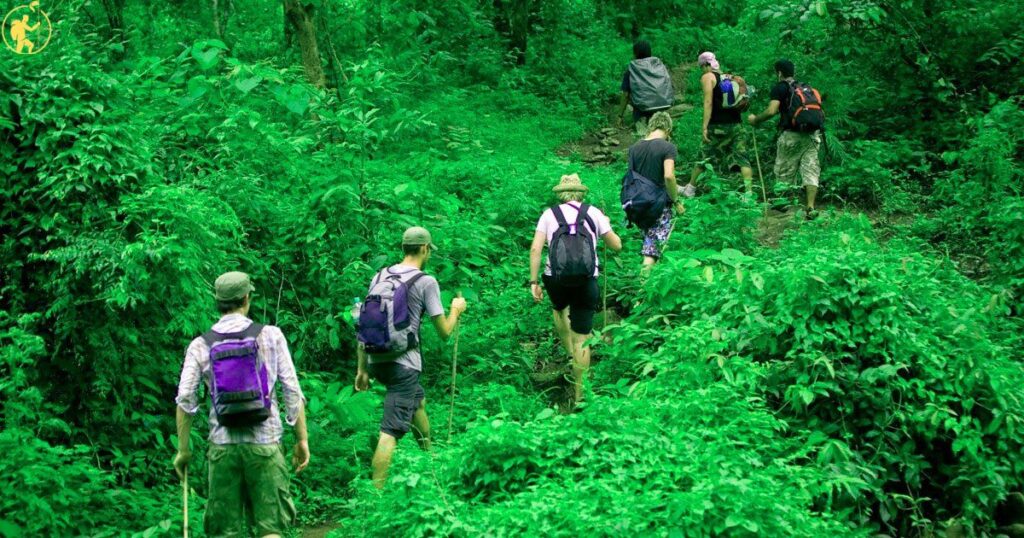
The thru-hiking community is a close-knit group of outdoor enthusiasts. Hikers from diverse backgrounds come together with the shared objective of completing long-distance trails and engaging in various outdoor activities. Supportive camaraderie defines this community, creating a space for shared experiences and valuable insights.
Thru-hikers frequently exchange tips on gear, trail conditions, and resupply points. Trail magic, unexpected acts of kindness from fellow hikers or trail angels, is a distinctive aspect of the thru-hiking experience. This community thrives on mutual encouragement and a profound appreciation for the transformative journey of completing lengthy trails, such as the Pacific Crest Trail or Appalachian Trail.
Your Gear
- Your gear encompasses the equipment or tools tailored for a specific activity.
- Items like cameras, hiking boots, or musical instruments fall under this category.
- The appropriate gear enhances performance and comfort across various pursuits.
- Outdoor enthusiasts often prioritize durable and weather-resistant gear.
- In professional settings, tech gear like laptops and smartphones aids productivity.
- Athletes meticulously choose sports gear to optimize their performance and safety.
- Quality gear significantly contributes to the overall success and enjoyment of hobbies.
- Regular maintenance ensures the longevity and reliability of your gear.
- Choosing the right gear is paramount for a successful and enjoyable experience.
- Personal preferences and specific needs heavily influence the selection of gear.
Thru-Hiker Speak

- Thru-hiker speak encompasses the unique language and terminology used by long-distance hikers.
- Zero day denotes a day without hiking, often utilized for rest or resupply purposes.
- Trail magic signifies unexpected acts of kindness or generosity experienced on the trail.
- Ultralight emphasizes lightweight backpacking, focusing on minimizing gear for efficiency.
- A trail name is a nickname adopted by thru-hikers, typically bestowed by fellow hikers.
- Resupply involves the process of restocking food and essentials during a hike.
- Blue blazing entails taking an alternate route to bypass a section of the main trail.
- Thru-hike refers to completing an entire long-distance trail in one continuous journey.
- The hiker box represents a communal box where hikers leave or take surplus gear and supplies.
- A bear canister is a container designed to store food, protecting it from bears.
- Trail angel describes individuals who provide support or assistance to hikers along the trail.
- The triple crown symbolizes the achievement of completing the Pacific Crest, Appalachian, and Continental Divide Trails.
The Life of a Thru-Hiker
Embarking on a thru-hike is an adventure of stamina and exploration. Hikers cover thousands of miles, encountering various landscapes and weather conditions. With all the necessary gear in tow, every step teaches valuable lessons in perseverance.
Thru-hikers forge a strong bond with nature and embrace simplicity. Their daily routines center on survival, nurturing a profound gratitude for life’s essentials. The trail unfolds stories of triumph, leaving an everlasting impact on each hiker’s life.
Tips for Aspiring Thru-Hikers
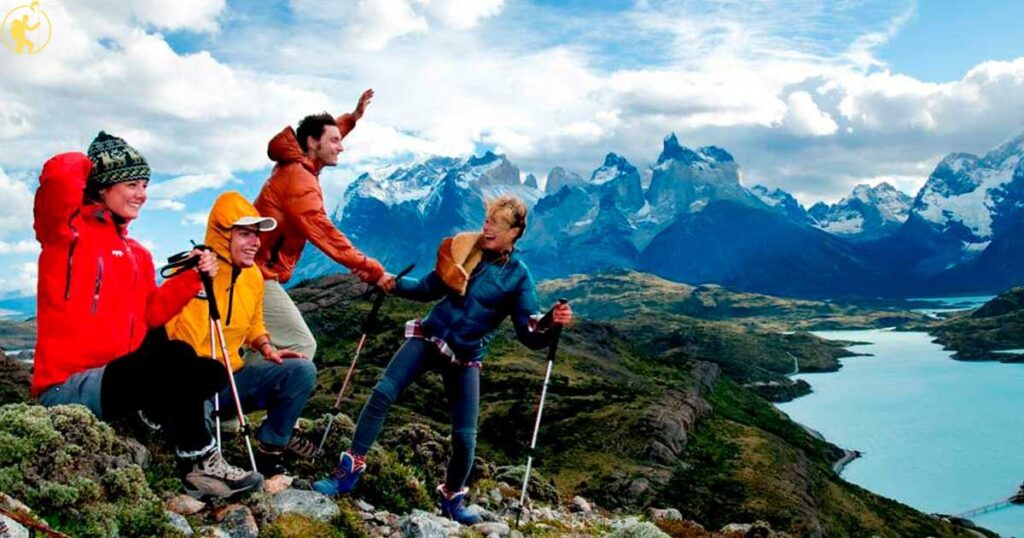
Getting ready for a thru-hike requires careful preparation and training. Begin by delving into the details of your chosen trail, grasping the nuances of the terrain and climate. Invest in high-quality gear that strikes a balance between durability and weight for a more enjoyable journey.
Physical fitness is crucial; incrementally build your stamina and strength through consistent training. Set a realistic daily mileage target to maintain a steady pace and avoid exhaustion. Adopt a minimalist approach while packing, prioritizing essentials over unnecessary items. Lastly, seek guidance from seasoned thru-hikers, absorbing their insights to enrich your own adventure.
Thru-Hiking Resources

Embarking on a thru-hike? Arm yourself with valuable tools for success. Online communities such as Reddit’s r/ThruHiking offer a space to seek advice and exchange experiences with experienced hikers. Guidebooks tailored to specific trails provide crucial route details, assisting in effective planning and navigation.
Trustworthy gear evaluations from sources like OutdoorGearLab help in choosing dependable equipment. Stay informed by following thru-hiking blogs and YouTube channels for insights into real-world experiences. Explore local hiking clubs or attend workshops to acquire practical skills and connect with a supportive community. These comprehensive tools empower you for a fulfilling thru-hiking journey.
Thru-hiking map
Before you begin your journey, acquire a detailed thru-hiking navigation guide. Reliable sources such as the Appalachian Trail Conservancy or the Pacific Crest Trail Association offer extensive maps detailing crucial waypoints, water sources, and elevation changes.
Explore interactive online tools like Guthook Guides for real-time navigation assistance, enriching your on-trail experience. Ensure uninterrupted access, even in remote areas with limited connectivity, by downloading offline maps through apps like Gaia GPS. A trustworthy navigation guide serves as your compass for a successful thru-hiking adventure, leading you through the challenges and triumphs of the chosen trail.
thru-hiking vs backpacking
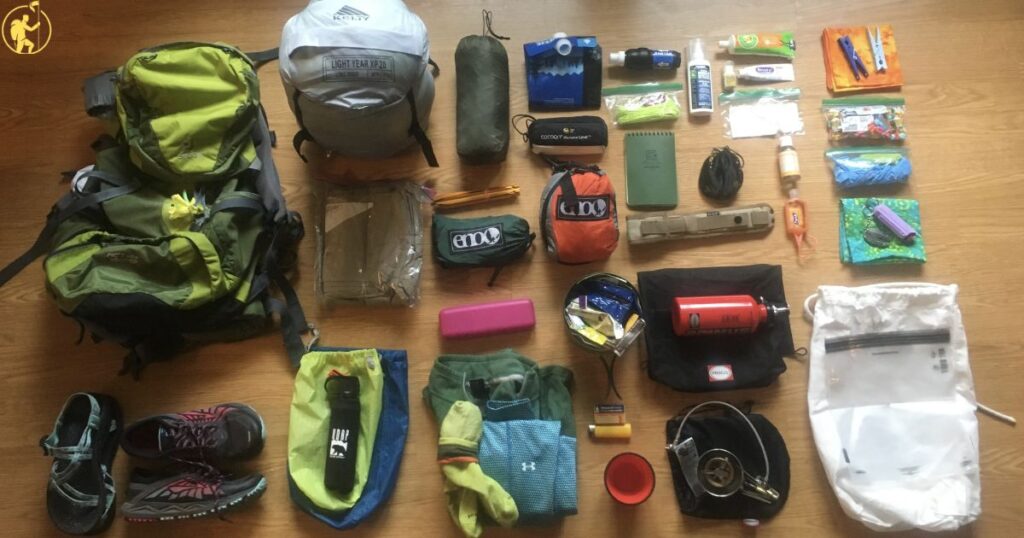
| Criteria | Thru-Hiking | Backpacking |
| Definition | Long-distance hiking end-to-end. | Multi-day hikes, variable duration. |
| Duration | Weeks to months. | Weekend to several weeks. |
| Trail Focus | Specific long-distance trails. | Various trails, not always long-distance. |
| Gear | Emphasis on lightweight gear. | Weight consideration, more flexibility. |
| Physical Demand | Intense endurance due to continuous trek. | Encounters on the trail, are less long-term. |
| Logistics | Careful planning for resupply, permits. | Important, but more flexible. |
| Popular Trails | Appalachian, Pacific Crest, Continental. | National parks, wilderness areas. |
| Community | Strong camaraderie on the trail. | Enjoying nature, and outdoor experience. |
| Accommodations | Camping, trail towns. | Camping, campgrounds, backcountry. |
| Goals | Achievement of completing a long trail. | Enjoying nature, outdoor experience. |
thru-hiking before and after
Before thru-hiking, I only saw trails as weekend escapes. Short hikes were about scenery, not an epic journey. My gear was basic, and the goal was a day’s adventure.
After thru-hiking, trails transformed into life-altering odysseys. Weeks became months, gear choices meticulous, and goals shifted dramatically. The simple paths became chapters in a profound, challenging narrative.
FAQ’S
What is considered thru-hiking?
Thru-hiking is completing a long-distance trail end-to-end in a single journey.
How much money do you need for a thru-hike?
A thru-hike typically requires a budget ranging from $4,000 to $8,000, encompassing expenses such as gear, permits, food, and occasional lodging.
What does thru-hiking do to your body?
Thru-hiking can strain muscles and joints, induce weight loss, and improve overall fitness.
Conclusion
In exploring the world of thru-hiking, a spark of curiosity ignites. The allure of epic trails, challenging terrains, and the transformative nature of the journey beckons the adventurous spirit. As we navigate the highs and lows of this outdoor odyssey, the question lingers—what untold stories do these trails hold, and what personal narratives could unfold if we step onto the path? The answer lies in the footsteps of those who venture, the whispers of the wilderness, and the uncharted chapters yet to be written.

J.K. Rolowing, an avid hiking enthusiast with 8 years of experience, blends passion and nature in captivating tales. Embracing the trail, weaving adventures through words.
